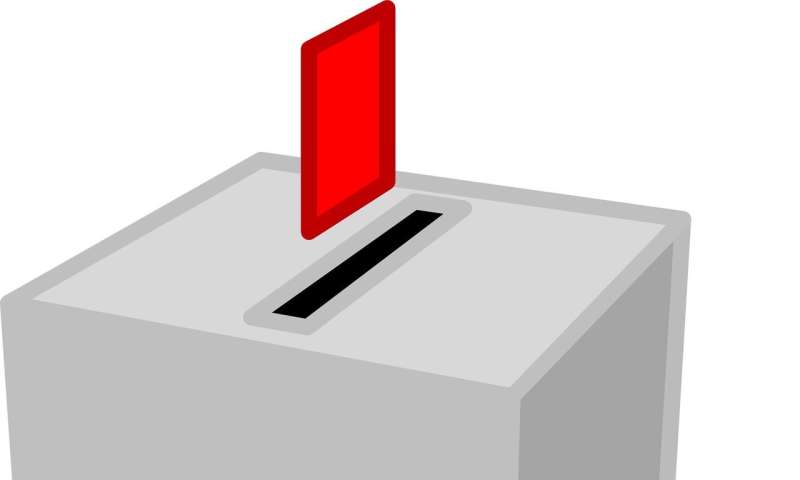This article has been reviewed according to Science X's editorial process and policies. Editors have highlighted the following attributes while ensuring the content's credibility:
fact-checked
trusted source
written by researcher(s)
proofread
Big data play a huge role in US presidential elections. Do they have the same impact in Australia?

A key reason Barack Obama won the 2012 U.S. presidential election was his campaign's use of "big data" to target specific voters. His team created multiple versions of ads aimed at niche audiences, taking care to test every message.
Naturally, some have worried about the potential power of these data-driven campaign techniques to manipulate voters. But have these methods taken over election campaigns in Australia?
In short, not really. Australian campaigns typically rely on much less data-intensive techniques due to a lack of resources, doubts about the data, and ethical and philosophical concerns about the approach.
I am a political scientist who studies political advertising in the United States, and I spent the first six months of 2023 in Australia as a Fulbright scholar. I interviewed campaign staff and political consultants about their use of various campaign techniques in state and federal elections.
My questions focused on political advertising—how it is targeted, the extent to which ads are tailored to specific audiences, and how campaigns test their messages.
So what do advertising campaigns look like?
First, while the expertise exists to do micro-targeting of individual voters based on sophisticated statistical modeling, most campaigns target broad categories of voters defined by their age, gender, where they live or the language they speak.
This kind of targeting, of course, has existed for decades. Campaigns have sent mail to specific addresses or knocked only on certain people's doors.
Second, while a presidential campaign in the U.S. might create tens of thousands of versions of an online political ad, such tailoring of ads to specific audiences is much more limited in Australia.
Third, ad testing relies heavily on the simple tools provided by Meta (owners of Facebook and Instagram) and focus groups. Large-scale testing done with online panelists is rare.
In short, most Australian campaigns do not resemble the data-intensive campaigns typical of presidential elections in the U.S. Why?
One reason is that campaigns do not have unlimited money and staff resources. At the end of the day, hiring a data scientist or creative staff to design ads for multiple audiences is a luxury most campaigns cannot afford. In contrast, more than US$6.6 billion (A$10.2 billion) was spent on the 2020 presidential election.
Second, campaign staff expressed some doubts about the data that do exist. While there was a lot of confidence in the voter roll provided by the Australian Electoral Commission, many interviewees reported that audience engagement on Facebook had declined considerably. In addition, it is now much more difficult to pinpoint where people spend their time because of privacy changes to Apple's operating system.
Moreover, some campaigners, especially from the Greens, had ethical concerns about delivering different messages to different sets of voters.
Finally, there is a real disagreement about the wisdom of conducting a data-intensive campaign in which individual voters are targeted with tailored messages based on their beliefs, behaviors and demographic characteristics. Not only is this type of campaigning costly, but some argued that the key to winning an election is to send one broad message—or a small number of messages—to as many voters as possible. At the end of the day, parties want awareness of their candidates and an understanding of their central message.
So will Australian campaigns soon resemble the data-driven enterprises we see in the U.S.? It seems unlikely.
First, in spite of public funding and few limits on raising money, Australian campaigns remain low-cost affairs compared with their US counterparts.
Second, the doubts about the effectiveness of data-driven microtargeted campaigns—and the data on which they rely—show no sign of abating. Indeed, one person who works for the Labor Party told me the party severely reduced the number of online ads it created between 2019 and 2022. The individual explained:
"In 2019, we created 1,000 different variations of digital ads, all informed by online experiments. We identified segments based on demography or geography, and we picked ads that did the best. But I'm not sure what value we got out of that hyper-optimization—it was technological fetishization. We didn't stop to ask if it was a strategically intelligent campaign."
Finally, while registered political parties in Australia are exempt from data privacy laws, that may not be the case forever if Australia follows Europe's lead. New rules in the European Union restrict the use of sensitive personal data for micro-targeting political ads.
Earlier this year, the Australian Attorney-General's Department released a review of the Data Privacy Act of 1988. Among the recommendations were limits on advertising targeting.
So worries about the potential of data-driven campaigns to manipulate Australian voters could prove to be more hype than reality.
Provided by The Conversation
This article is republished from The Conversation under a Creative Commons license. Read the original article.![]()





















